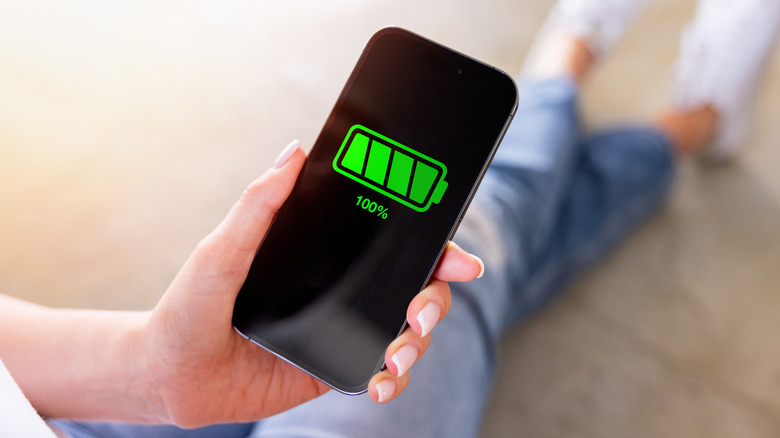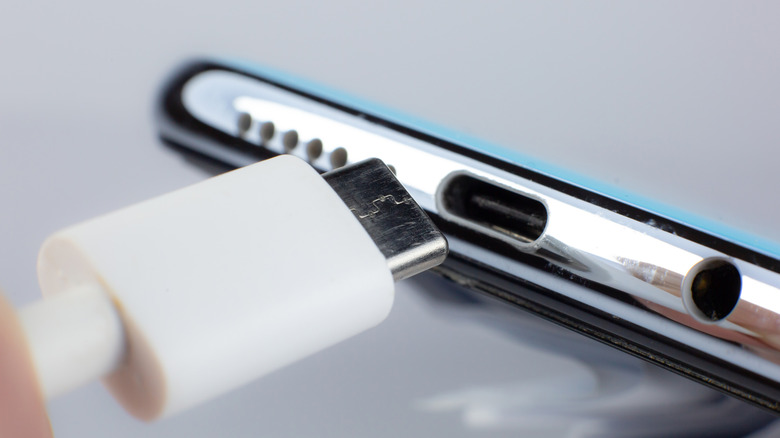How Do Fast Chargers Know How Much Power To Deliver To Your Device?
A study on mobile phone usage in the U.S. showed that Americans use their phones for an average of 5 hours and 16 minutes per day (via Harmony Healthcare IT). That kind of usage means battery drain, and charging it back up can take a few minutes for a small charge or one to two hours from zero to full when using a regular 10 or 18-watt charger. A quicker alternative is to use fast chargers (ranging from 18 watts to 65 watts), which can restore up to 60% of your battery in 30 minutes, and can provide the correct power level for the device using the power handshake protocol.
To ensure secure and efficient charging, a phone charger and a phone communicate through a process known as the power handshake. By communicating with the phone, the charger can identify the correct voltage and current the phone accepts, which protects it from damage by excessive power. In the case of fast charging protocols, the charger may first provide a regular 5 volts of power delivery, and then go to a higher voltage for faster charging if it's safe to do.
Currently, there are several fast charging protocols for mobile phones, starting with the popular USB PD. Some are brand-related, such as the Qualcomm Quick Charge, Samsung Adaptive Fast Charging, OPPO VOOC, and the Huawei SuperCharge. The reasons for these different charging protocols include proprietary technology and manufacturer preferences, the requirement for optimal charging speeds, and safety considerations. Alongside the different protocols, there are also several kinds of fast chargers, making it important to know how to choose the fastest charger for your phone.
Fast charging is great, but remember to use it wisely
Compared to conventional techniques, fast charging delivers more power, measured in watts, which helps replenish the battery faster. One common misconception about fast charging is that it can damage your phone, but this isn't true. Power delivery protocols are designed to prevent that.
The ability to quickly charge your phone or tablet saves you time and potentially reduces electricity costs by a small margin. Furthermore, some phones and chargers include advanced capabilities like battery management systems that help the device control voltage and heat, which can extend the battery's overall lifespan.
While fast charging a mobile device may seem straightforward, it's important to observe proper charging techniques to ensure optimal performance and prolong battery life. Always charging the battery to full can shorten its lifespan or cause slower charging times. To maximize the advantages of fast charging, make sure to always follow the manufacturer's instructions and use the right charger to avoid potential risks and get the best performance from your device.

